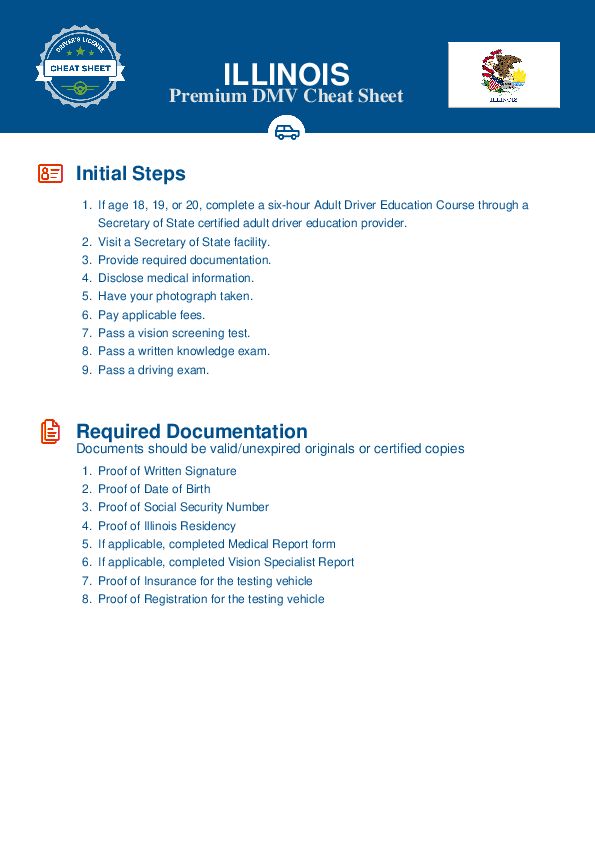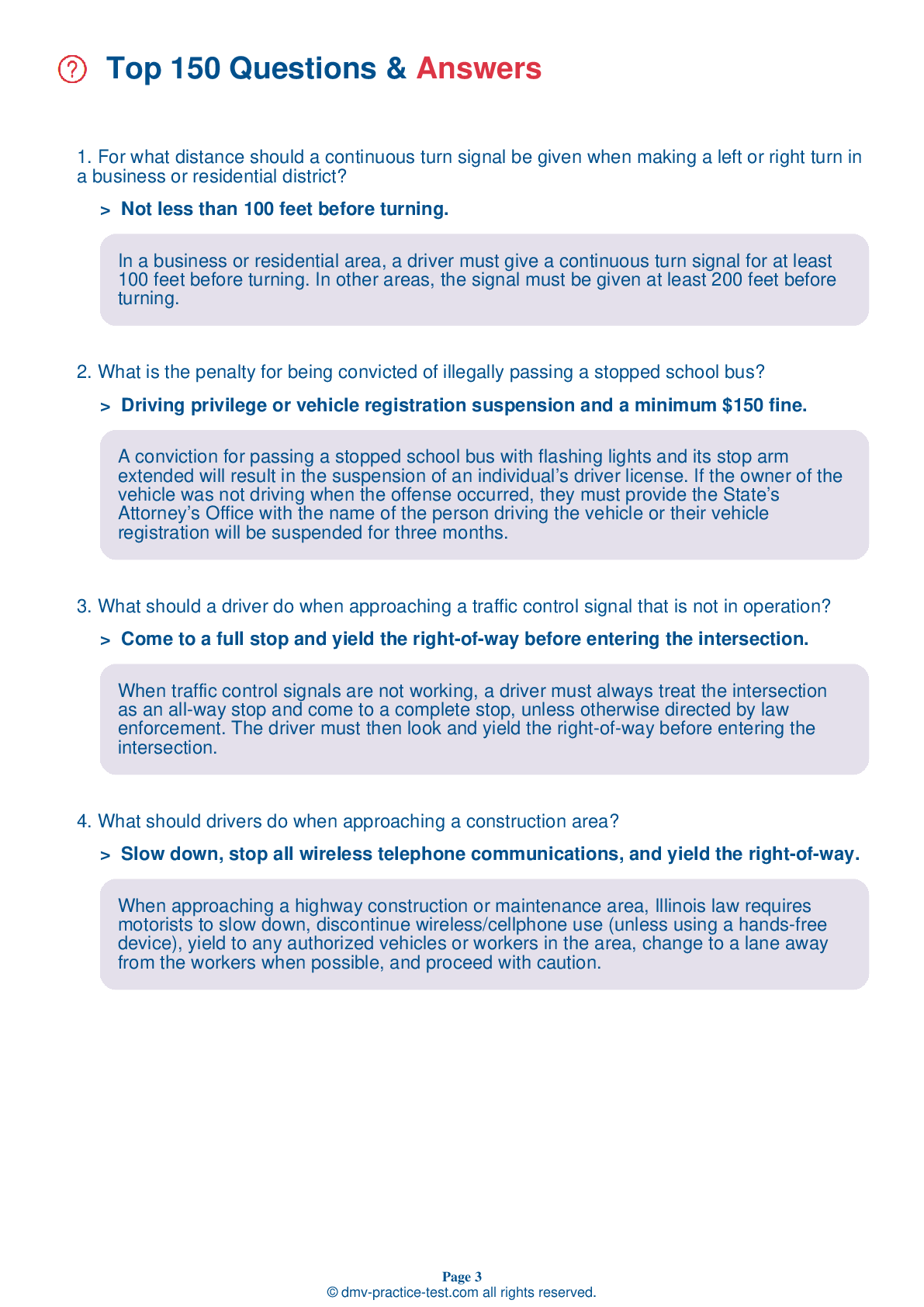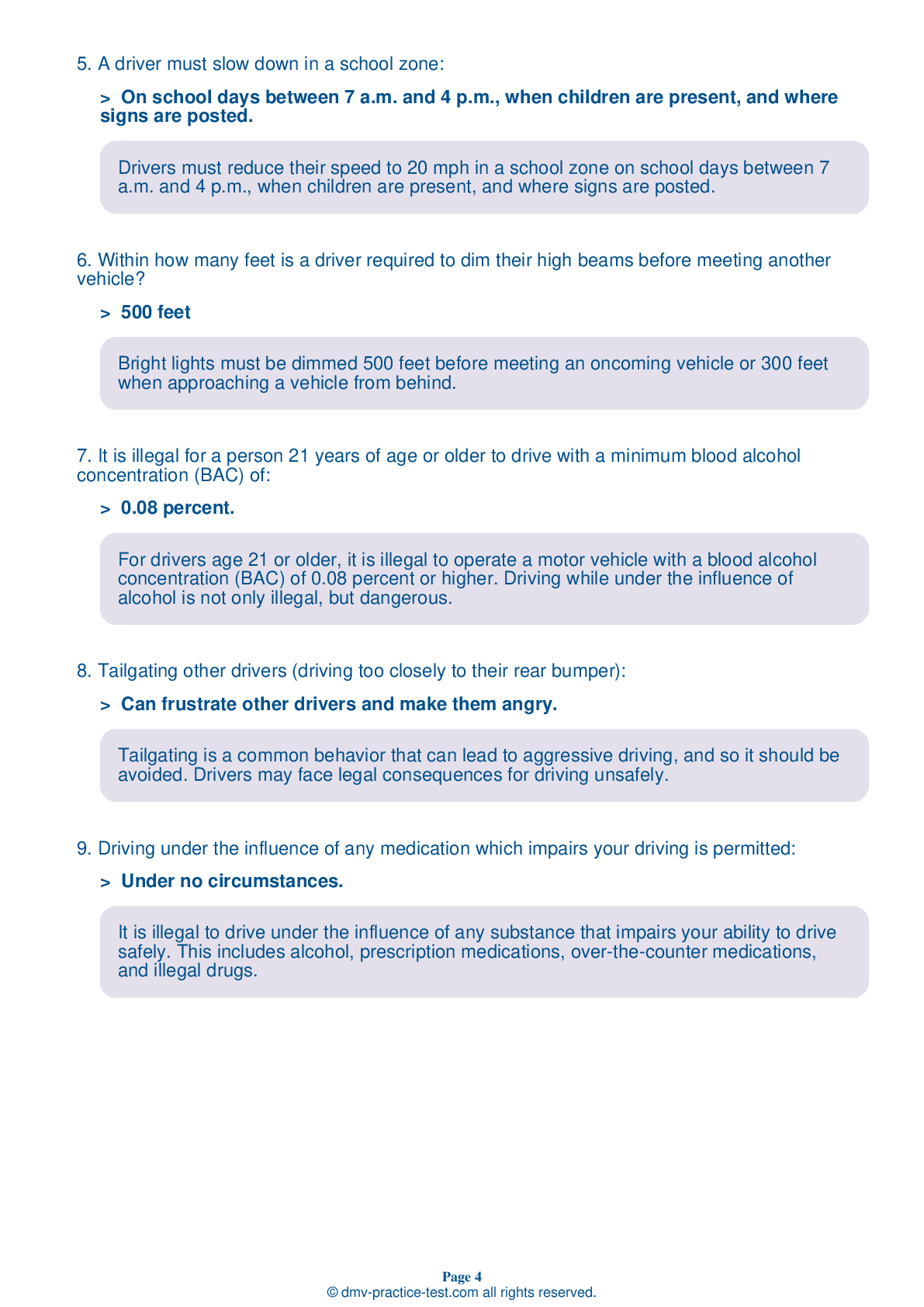FREE Illinois DMV Practice Test #1
For January 2025, this set of Illinois DMV practise tests has been updated. It includes questions based on the most important traffic signs and rules for 2025 from the Illinois Driver Handbook. To study for the DMV driving permit test and driver's licence exam, use actual questions that are very similar (often identical!) to the DMV driving permit test and driver's licence exam.
Each question on the practise exam has a tip and explanation to help you recall the ideas. Questions about traffic rules, traffic signs, and driving statutes, as well as information from the Driver Handbook, will be included in the written portion of the official DMV test.
You must properly answer 38 of the 35 questions to receive a passing mark. To help you prepare for your Illinois instruction permit or driver's licence, take our DMV practise test.
The DMV exam is offered in a variety of languages.
Using any form of testing help will result in an automatic fail, and the DMV may take further action against your driver's licence, so avoid it.
2 . Which of the following statements is true?
Driving too slowly can be dangerous because it may cause drivers behind you to become frustrated and make dangerous moves to pass you. It is safest to drive with the flow of traffic, within the legal speed limit.
3 . This sign means:
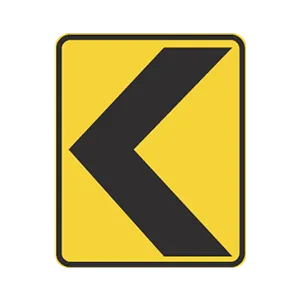
This sign warns a driver of a change in direction or a narrowing of the road. A driver may find several of these signs on the outside of a sharp curve or on approaches to a narrow bridge.
4 . This road sign means:
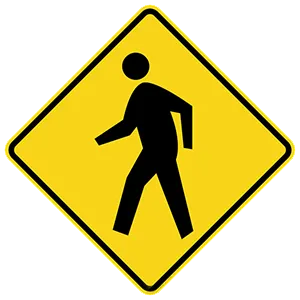
Warning signs are usually yellow with black markings. This sign indicates the presence of a crosswalk, regardless of if it is marked on the pavement or not. Upon seeing this sign, you should be alert and allow any pedestrians to cross the road safely.
5 . "No zones" are areas around trucks where cars:
"No zones" are areas around trucks or buses in which cars disappear into the larger vehicle's blind spots. "No zones" can also be defined as areas in which cars are so close to the larger vehicle that they restrict the truck or bus driver’s ability to stop and maneuver safely. A car being in a "No zone" greatly increases the potential for a crash.
6 . When an authorized vehicle using its sirens and flashing lights approaches a vehicle, the driver should pull to the right-hand edge of the roadway and wait for the emergency vehicle to pass.
When being approached by an emergency vehicle that is using its lights and/or sirens, you must immediately pull to the right side of the road and allow it to pass.
7 . This sign means:
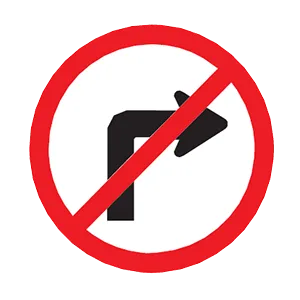
Signs with a red circle and diagonal line over a black symbol indicate the the action represented by the symbol is prohibited. In this case, the sign indicates that right turns are prohibited.
8 . You can help keep the driver behind you a safe distance away from your vehicle by:
It is not always easy to maintain a safe distance behind your vehicle. However, you can help keep the driver behind you a safe distance away from your vehicle by maintaining a steady speed and signaling turns, lane changes, and deceleration in advance.
9 . In order to obtain court supervision for a traffic violation, a minor must appear in court with a parent/legal guardian and attend a traffic safety school.
A driver under age 18 who is under court supervision for a traffic violation must appear in court with a parent or legal guardian and also must attend traffic safety school.
10 . When stopped at a red traffic light with a green arrow, you may proceed in the direction of the arrow if you:
You may proceed in the direction that a green arrow signal is pointing if you are in the proper lane, regardless of any other signals that are displayed. Before turning, you must yield the right-of-way to pedestrians and vehicles already within the intersection.
11 . To avoid glare from the headlights of an approaching car:
You should avoid looking toward the bright lights of an oncoming vehicle by glancing toward the right side of the road. After looking briefly toward the side of the road, continue looking ahead to check on the position of the other vehicle.
12 . If you have an argument with another person and you are angry, you should:
Your emotions affect your ability to drive safely. If you are overly angry, excited, afraid, worried, or depressed, you should give yourself time to calm down before operating a vehicle. You need to be able to mentally focus on driving without thinking about the things that made you upset.
Need Car Insurance? No problem!
Compare the best rates in Illinois and find a personalized policy that meets your needs.
1. Are You Currently insured ?
2. Married ?
3. Do you own your Home?
4. Do you have more than 1 car ?
5. Have you or a Family Member Honorably Served in U.S. Military ?
6. Your Name
7. Age
8. Zip code
IMPORTANT REMINDER:Auto Insurance is Mandatory to drive in Illinois. Get covered before you hit the road to avoid any fines.
Ranked by best match

